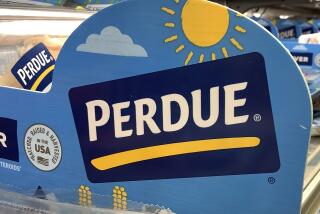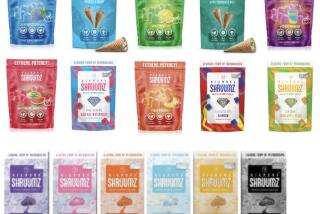Imported Necklacesa Serious Health Risk
- Share via
This pales in comparison to bioterrorism, but its worst-case scenario is no less deadly. Since the start of the school year, consumer protection watchdogs have been on guard for a reemergence of imported necklaces that can pose serious health risks.
Popular with schoolchildren, the inexpensive pendants from Mexico typically come as 1-inch, clear-glass vials, dime-size glass balls, or glass hearts, among other shapes, that are strung from chains, cords or leather strands.
The danger is what’s inside the fragile glass pendants--potentially toxic silver liquid mercury, often suspended in colored liquid. Should the pendant break, the mercury can easily be absorbed through the skin and, at high levels, can damage the brain, kidneys and, in pregnant women, fetuses. Exposure to mercury vapors can cause health problems from skin rashes to lung damage, and even death.
“We are aware of such imports, and we always try to find these firms that are importing such necklaces without a warning label,” said Becky Bailey, deputy director of public affairs at the Consumer Product Safety Com-mission.
The commission was following up on a tip recently, she said, that the potentially hazardous necklaces were reappearing. “We hear about them coming mostly into the central part of the country and the West Coast,” she said.
The necklaces, by federal law, require mercury-content warning labels, but they continue to crop up every couple of years without the warning. The commission recalled a specific necklace design in 1995 when the Washington State Department of Health alerted the feds to a school that had to evacuate after a mercury-filled pendant broke. A year later, a 5-year-old Texas girl playing in a sandbox was exposed to mercury vapors from her broken necklace and died. In 1998, two more incidents of broken pendants caused a scare in Fort Worth, Texas, schools.
Cleaning even a small mercury spill requires increased ventilation, according to the Environmental Protection Agency’s mercury information Web site (https://www.epa.gov/mercury/index.html), plus careful and thorough “picking up” of the quicksilver beads with an eyedropper or heavy paper scoop. The EPA recommends disposing of even small amounts of mercury in triple zip-lock bagging before contacting the state health department for the nearest state-approved mercury disposal location.
Look for the number of common household products containing hydrocarbons sold with child-resistant packaging to increase over the next year. Last week, the commission voted unanimously to require childproof packaging on cosmetics (such as baby oils, sunscreens), automotive chemicals (gasoline additives, carburetor cleaners), cleaning solvents (wood oil cleaners, spot removers), and some water repellents.
Spurring the action: 6,400 emergency-room visits from 1997-99--many by children under 5 who ingested household products--plus five children who have died since 1993 from drinking these products.
More to Read
Inside the business of entertainment
The Wide Shot brings you news, analysis and insights on everything from streaming wars to production — and what it all means for the future.
You may occasionally receive promotional content from the Los Angeles Times.










